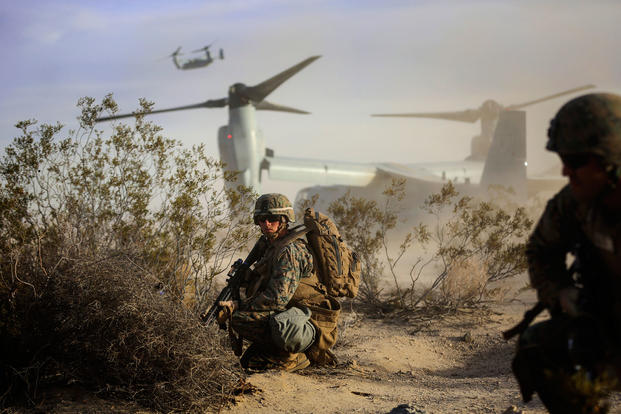A Marine general has a blunt warning for the U.S. as it faces new threats from near-peer enemies: The military is not currently set up to take them on and win.
"If you acknowledge that we are, in fact, in a great power competition and you take a look at our competitors, our competitors are well-organized and we are not," Maj. Gen. John Jansen, commandant of the Dwight D. Eisenhower School for National Security and Resource Strategy, said Tuesday.
Jansen, who's been tapped to receive his third star and serve in the Marine Corps' top budget job, warned specifically about China during a National Defense Industrial Association event.
China, he said, has taken the "best of capitalism and some of the bounties it brings and harnessed it and is making it work for them."
That's all while continuing to maintain an authoritarian -- and sometimes ruthless -- control over its people, he added.
The U.S., on the other hand, is not doing so well, Jansen said. There's been a breakdown between industry and the American common defense, he added.
To rebuild that divide, the Eisenhower School -- which trains military officers and industry fellows on national security and resource strategy -- recently brought together more than 100 experts and moderators to come up with a solution. Jansen will present their findings to top military leaders in September, including Deputy Defense Secretary Patrick Shanahan and Chairman of the Joint Chiefs Gen. Joseph Dunford.
"We just need to decide this as a nation," Jansen said, "which is, 'Are we going to organize or are we not?' Our most senior leaders need to make that decision. Are we going to come together and figure out how to compete? Because what we're doing now is incoherent."
He credited the National Defense Strategy, released in January, with helping to provide a framework for taking on sophisticated adversaries. The strategy not only mentions threats the U.S. faces from China, but also Iran, Russia and North Korea.
Weapons capabilities are changing faster than ever. The U.S. could find itself in the midst of a high-end conflict very quickly, Jansen said, after nearly two decades of focusing on counterinsurgency operations in the Middle East.
That's left the U.S. "15 years behind the problem," he said. Technology has changed rapidly in that time, as troops took on terror groups in places like Iraq, Afghanistan and Syria.
Jansen compared it to the period between 1936 and 1940 when little was done to prepare for fighting in World War II. It wasn't until 1940 when the Battle of Dunkirk inspired change, prompting the defense industry to build up new military capabilities.
"We have so much work to do to figure out what the force of the future looks like," he said. "... And that could take 10 to 12 years and billions or trillions of dollars to reorient that force."
-- Gina Harkins can be reached at gina.harkins@military.com. Follow her on Twitter at @ginaaharkins.













